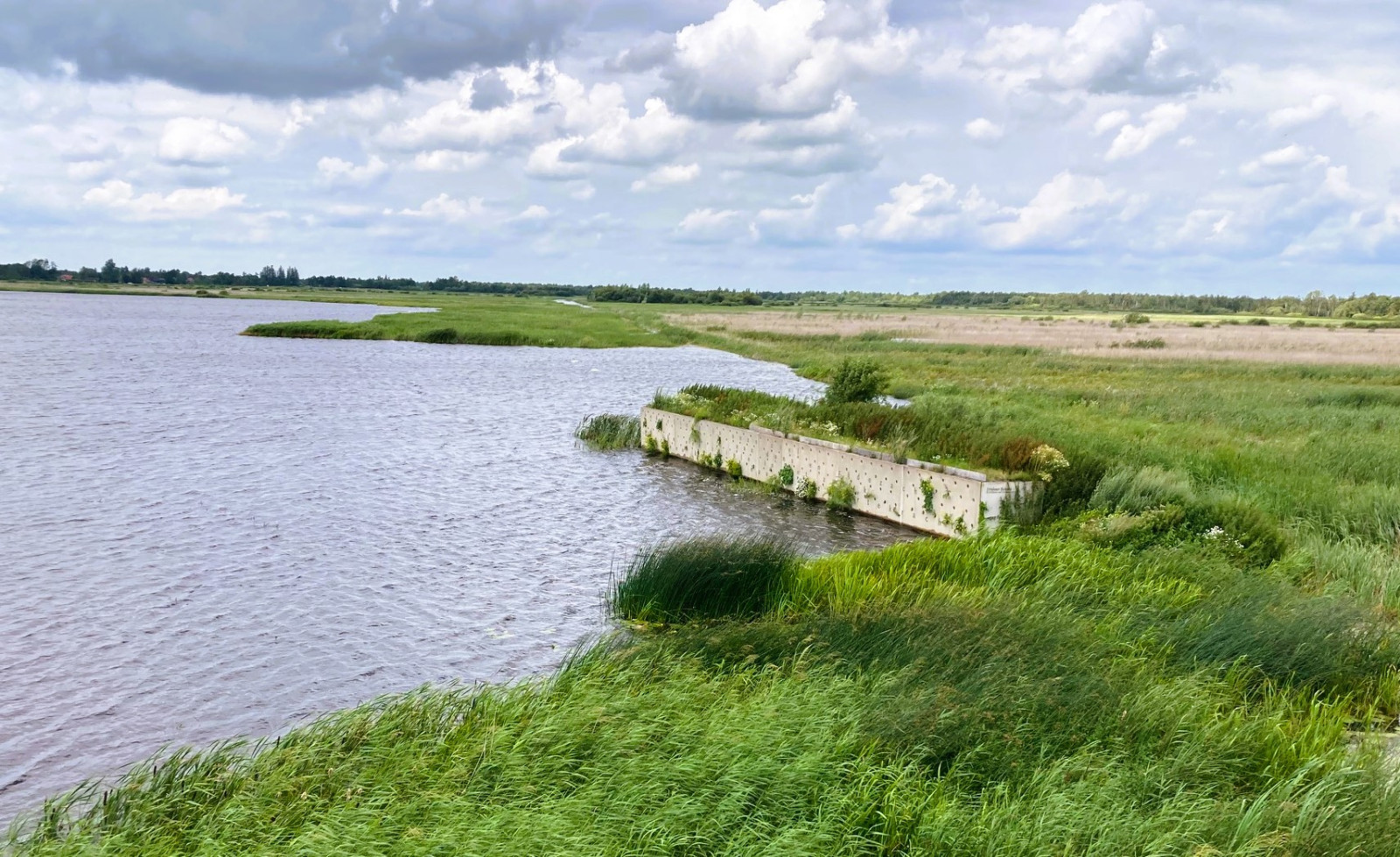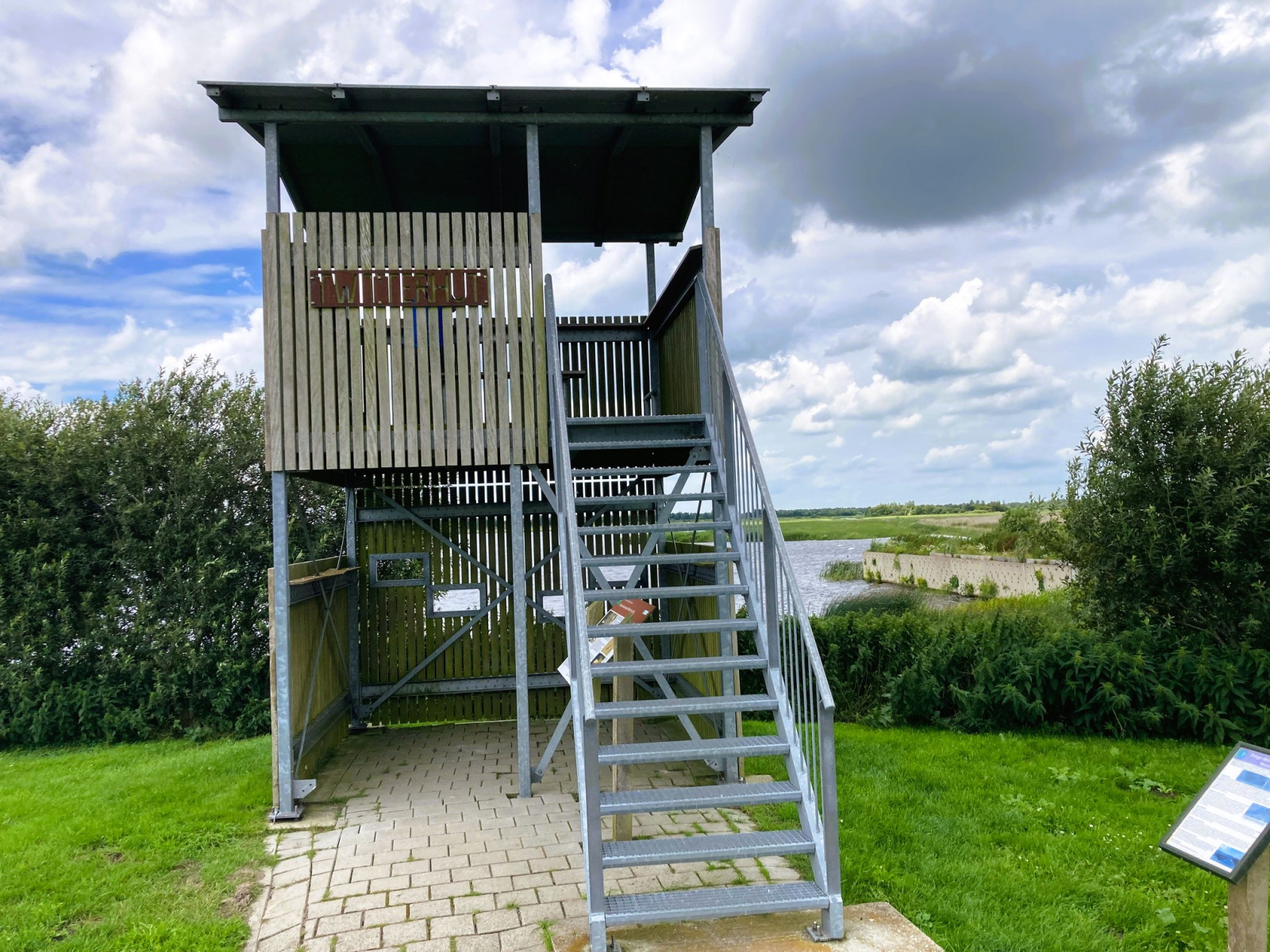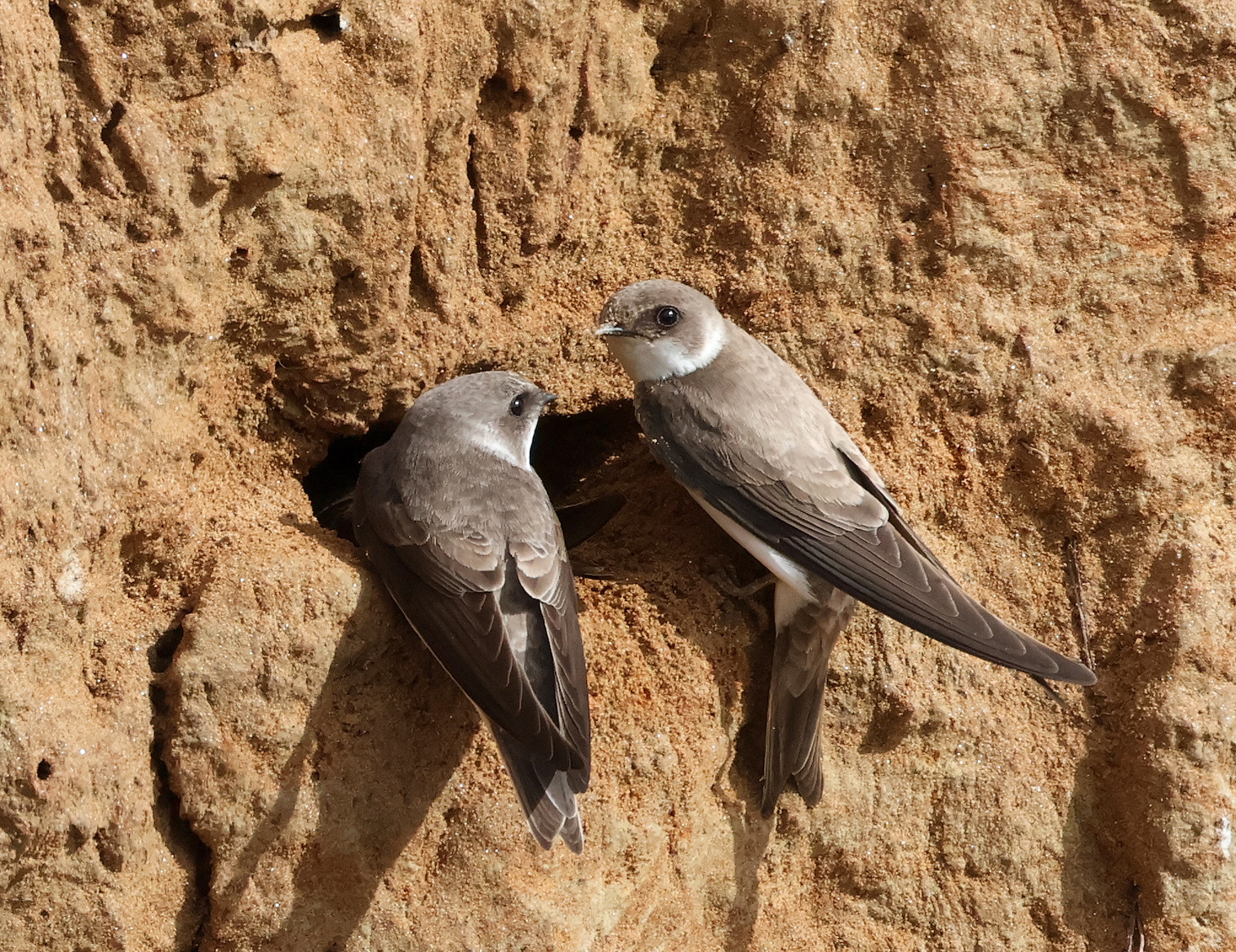Charger images
Les formats d'image autorisés sont de type jpeg, png ou gif
La taille maximale du fichier doit être de 20MB



Wetering Oost is a polder with the area's typical "ribs" of which a large part is flooded all year round. It has a special breeding wall for Hirondelle de rivage.
Wetering Oost is a polder of which a large part is flooded all year round. This lake can be seen beautifully from the Twitterhut hide, as well as the "ribs" from which the Weerribben owes its name. The hide offers a unique view of Hirondelle de rivage, which breed here in the summer in the special breeding wall that was installed in 2014. It is a perfect foraging area for swallows because of the many insects that live in the Weerribben. The beautiful Héron pourpré can often be seen here, especially flying. In addition, there is also the chance of seeing Spatule blanche, Aigrette garzette or even the Héron garde-boeufs. The sounds of Locustelle luscinioïde and Râle d'eau can be heard from the reeds, especially in the morning and evening, and Gorgebleue à miroir and Bruant des roseaux can also be seen. In winter there are mainly ducks like Canard chipeau, Sarcelle d'hiver and Harle piette, but also Grande Aigrette and with la bit of luck you can spot Butor étoilé and Panure à moustaches.
_________________________
Nederlands: Wetering Oost is een polder waarvan een groot deel het hele jaar door onder water staat. Vanaf kijkhut de Twitterhut is deze plas mooi te zien, evenals de "ribben" waar de weerribben zijn naam aan heeft te danken. De hut geeft een uniek zicht op Hirondelle de rivage, die hier in de zomer broeden in de speciale broedwand die in 2014 geplaatst is. Het is een perfect foerageergebied voor zwaluwen vanwege de vele insecten die leven in de Weerribben. De mooie Héron pourpré laat zich hier vaak, vooral vliegend, zien. Daarbij bestaat er ook de kans op het zien van Spatule blanche, Aigrette garzette of zelfs de Héron garde-boeufs. Vanuit het riet zijn de klanken van de Locustelle luscinioïde en de Râle d'eau vooral in de ochtend en avond te horen en verder onder meer de Gorgebleue à miroir en Bruant des roseaux te zien. In de winter zijn hier vooral eenden als de Canard chipeau, Sarcelle d'hiver en Harle piette, maar ook Grande Aigrette en met geluk Butor étoilé en Panure à moustaches te zien.
The car or bicycle can be parked in front of the Twitterhut. The hide has an upper floor with a beautiful view, but also a special ground floor for wheelchair users, with a view of the Hirondelle de rivage wall. A circular walk is also possible, where you can also park at the A.F. Stroinkweg (klinkerweg) near the bridge or at the Woldlakebos car park. The circular walk of more than 5 km (see the map) combines the Wetering East with the forest of Woldlakebos.
_________________________
Nederlands: Voor de Twitterhut is de auto en fiets te parkeren. De Hut heeft een bovenverdieping met mooi uitzicht, maar ook een speciale benedenverdieping voor rolstoelgebruikers, met uitzicht op de oeverzwaluwwand. Een rondwandeling is ook mogelijk, waarbij ook geparkeerd kan worden aan de A.F. Stroinkweg (klinkerweg) bij de brug of op parkeerplaats Woldlakebos. De rondwandeling van ruim 5 km (zie de kaart) combineert het Wetering Oost met het Woldlakebos.
Votre feedback sera transmis à l’auteur.rice de cette zone et à l’équipe éditoriale de Birdingplaces, qui l’utiliseront pour améliorer la qualité des informations. (Vous souhaitez publier un commentaire visible en bas de page ? Fermez cette fenêtre et choisissez l’Option 1 : « Publier un commentaire, un conseil ou une observation ».)
Veuillez fournir des suggestions d'améliorations ou d'ajouts au texte de ce site ornithologique.
Veuillez fournir vos suggestions d'améliorations ou d'ajouts à la carte.
Veuillez fournir des suggestions d'améliorations ou d'ajouts à la liste des oiseaux.
Cliquez sur l'icône de l'oiseau () Insérez les noms d'oiseau dans votre langue. Ils seront automatiquement traduits pour les autres usagers !